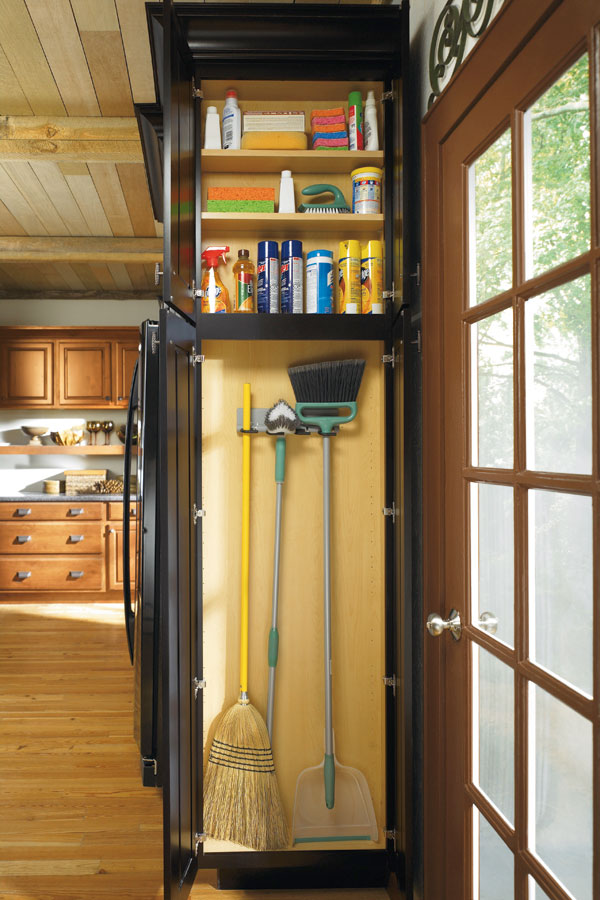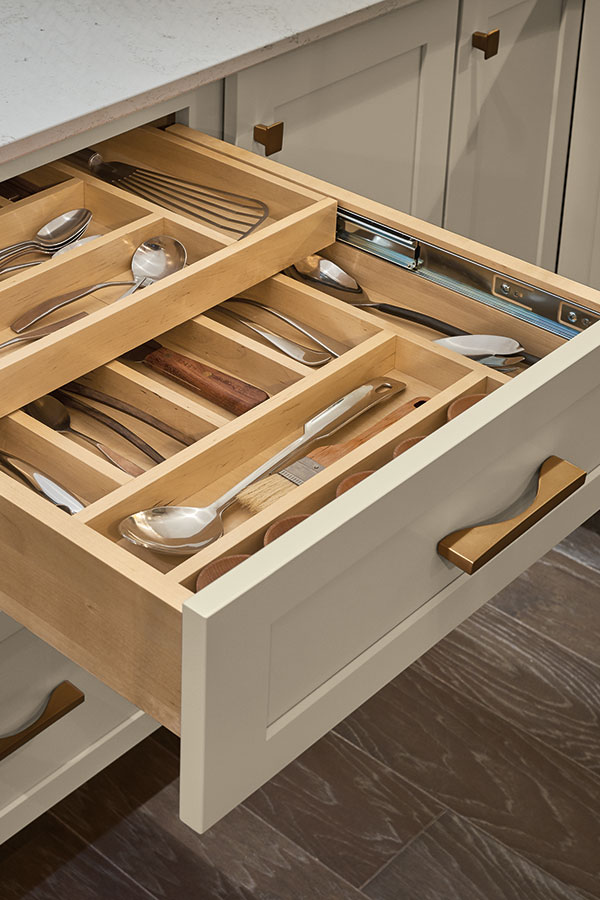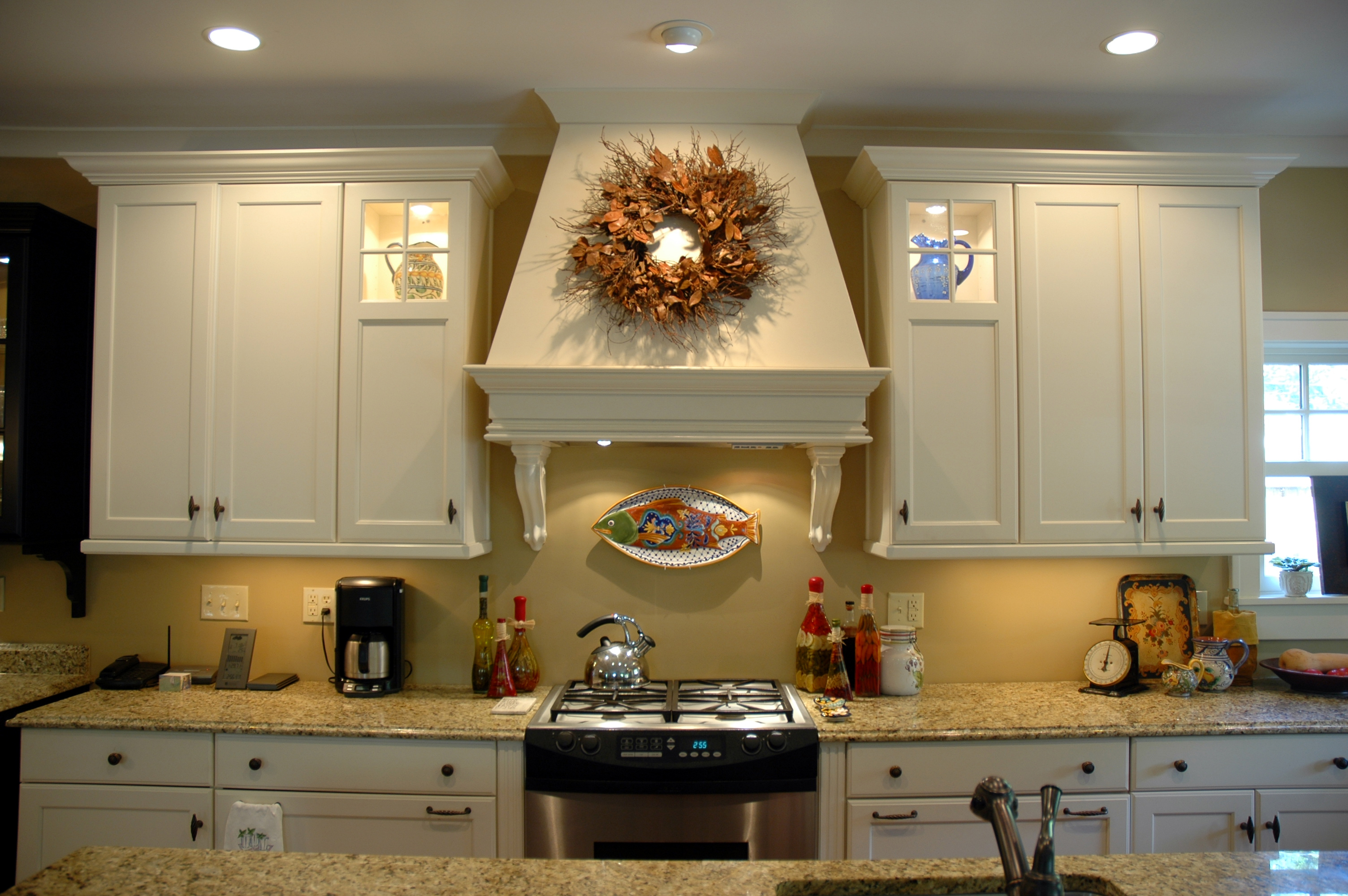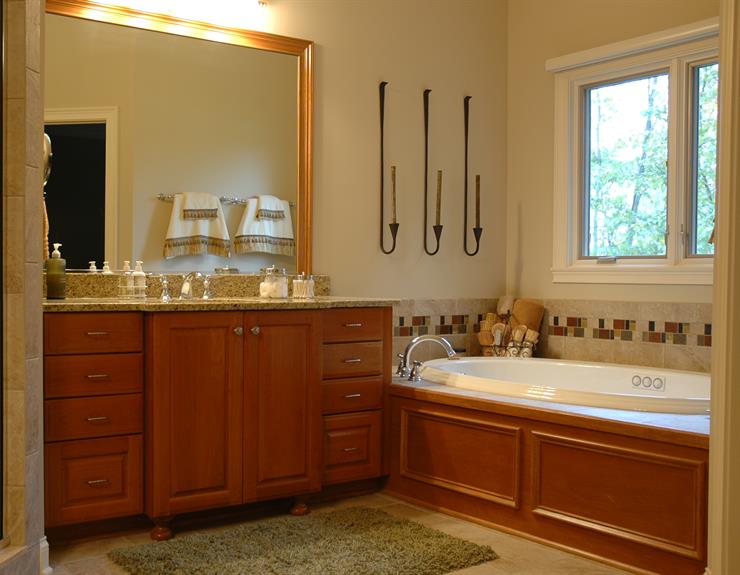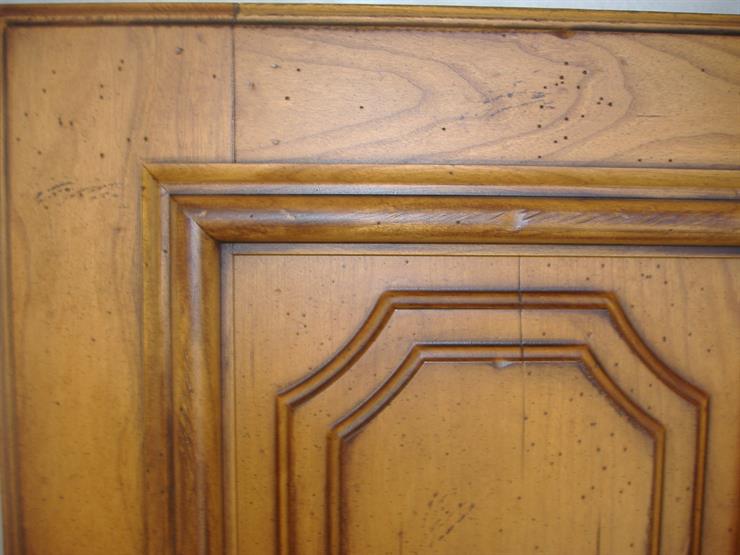As you embark on updating your kitchen or bathroom cabinets, there are numerous decisions to make ... including the cabinet finish/color. Regardless of the finish selected, the application process includes sanding the wood surfaces, applying the finish (stain, paint), sealing the finish, additional sanding, and the application of a topcoat to protect the finish from chemicals, scratches, and wear/tear.
Stain is the most common finishing option for cabinets. Stains come in an almost endless variety of colors and enhance the wood's color and pattern by penetrating into the grain or remaining on the surface. Stain is applied by spraying, wiping, or brushing it onto the wood's surface. The stain's penetration is dependent on the wood's grain structure. For example, hard maple has a dense, tight grain structure, making it difficult for the stain to penetrate deeply. Conversely, soft maple's grain is less dense and more open, allowing the wood to be stained very easily. Stain color is also impacted by the length of time the stain remains on the wood surface.
A painted finish is also a very popular option. In many kitchen remodeling projects, clients are choosing stained cabinets for the perimeter of the room and painted cabinets for the island. Similar to painted finishes, there are numerous color choices for painted cabinets. When choosing a painted finish, it is important to use tight-grained wood ... birch or maple are preferred ... to prevent the grain from showing through the paint. Enamel is used to help ensure a strong, durable finish for the cabinets. A downside to paint is hairline cracks along the joints become visible as the wood expands and contracts from humidity changes.
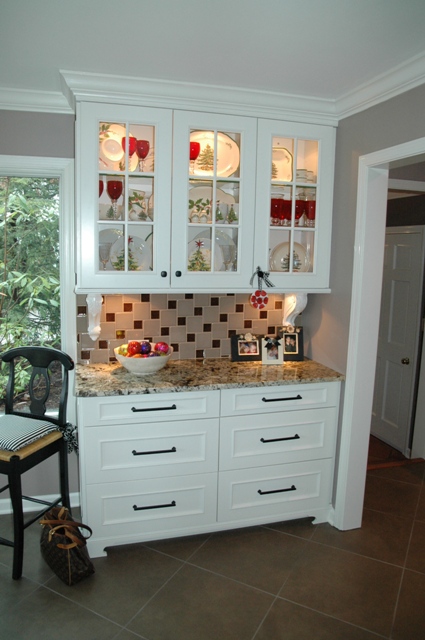
Glazes are transparent or semi-transparent stains applied late in the finishing process and are most often a complementary color to the base coat. Glazes are applied to both stained and painted finishes, providing character and depth to the finish. During the finishing process, a glaze is applied to the wood surface and then wiped off. While most of the glaze is removed, a portion remains in the cabinet grooves/molding details and in any natural wood imperfections. Alternatively, the glaze can be applied only in the grooves or corners.
Distressing artificially ages the wood to creat a look consistent with a period of time. Distressing comes in a variety of forms, including a crackle finish to mimic cracks in painted finishes, dings and dents to simulate wear/tear, rubbing through the finish to create a worn effect, and randomly placed worm holes.
Thermofoil finish is the application of a plastic laminate coating to engineered furniture board. The laminate finish can be applied to a variety of door/drawer shapes and profiles. Thermofoil provides a strong durable finish. However, thermofoil comes in a limited number of color choices and if damaged, is difficult to repair.
Finally, stainless steel can be used to create a very contemporary look. In this situation, stainless steel is applied over wood frames, so the door style choices are more limited. Stainless steel is a very durable and easy to clean finish.
.jpg_h998-w1546.jpg)


